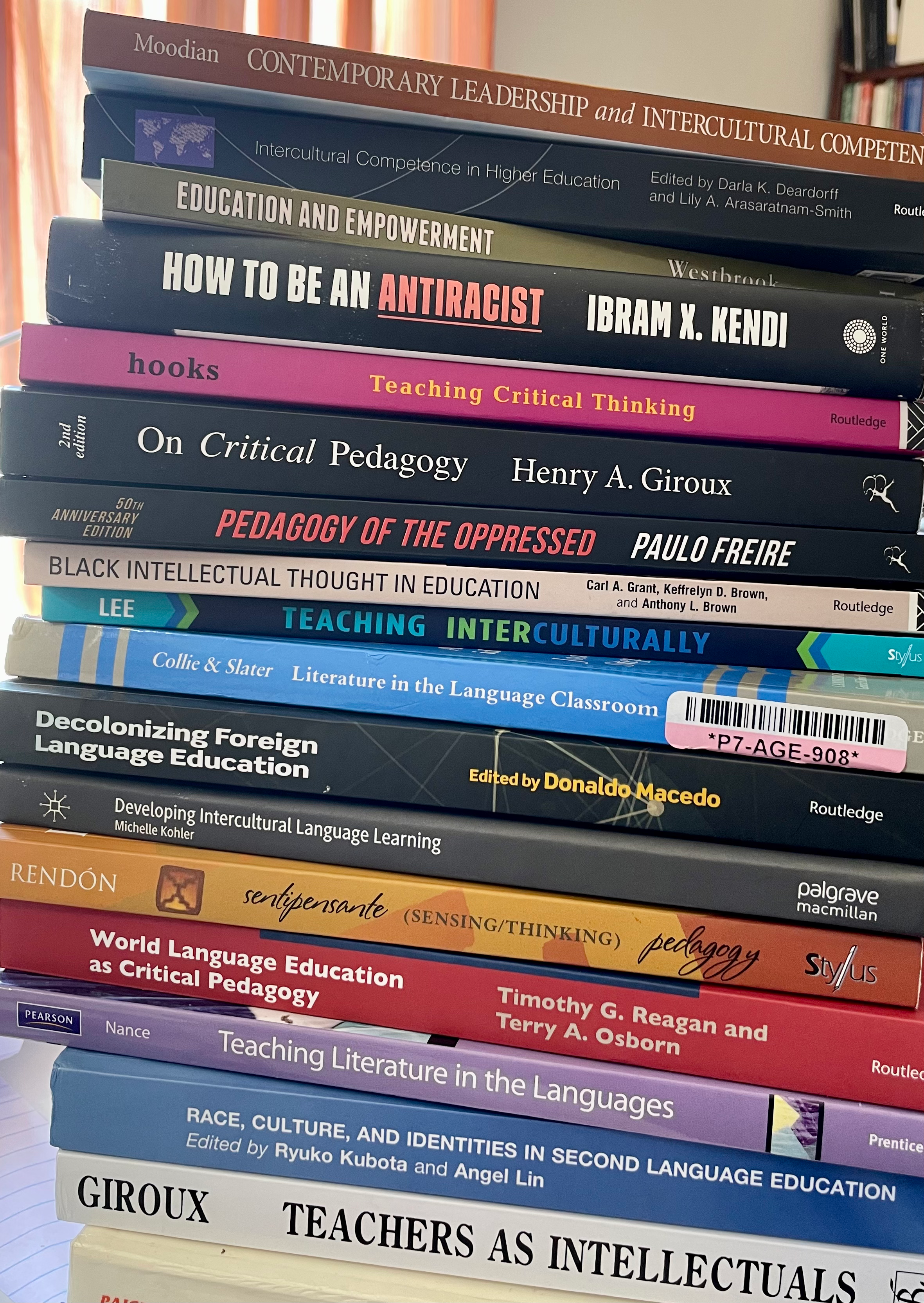

Critical Pedagogy Book Club
Topics


The Collaborator

The Critical Thinker


The Collaborator

The Critical Thinker
This online group enjoys reading about pedagogy and debating it. There are reviews of books and recommendations.
I'm currently reading Inclusive Teaching: Strategies for Promoting Equity in the College Classroom by Kelly A. Hogan and Viji Sathy. I'm looking forward to discussing it in a blogpost soon! Have you read it already? Share your impressions of the book.

Inclusive Teaching Strategies (2022) is a text written by two colleagues who professors of STEM who wanted to find a way to reach their African American students after one of them realized that her Black students were more likely to earn D’s and Fs in her science courses. In fact, they cite the research of Hurtado, Eagan. & Chang (2010) that show that only about 15% of science students who identified as Latínx, Black, and Native American actually graduated with a science degree in 4 yrs in the first decade of this century. Faced with these facts and convinced that these students had the ability to achieve, SAthy weas determinged to re-shape the experience of her students of color, to show them that they were all capable of succeeding. This book describes the strategies and practices of these two friends and colleagues that worked for them as they answer their own question: “Can we change our pedagogy and meet the needs of more students?”
This book is about using teaching approaches that acknowledge and encourage Diversity, Equity and Inclusion to empower students and leverage diversity to enhance learning. Spoiler alert: they endorse strategies that align with how students learn best; some might call these strategies culturally relevant teaching approaches. This is an easy read that is heavy on anecdotes, but is charged with research of others on the topic. It certainly has an ideology and the authors readily admit to subscribing to a particular framework (I’ll let you read about it on your own) that adds structure to the learning environment which promotes both feelings of inclusion and academic success.
If you, like me, reject the hidden curriculum, endorse accountability, embrace a high-structure learning environment, and believe in the importance of maintaining an inclusive mind-set, you will enjoy this read take a lot from this text that can be immediately used in the courses that you teach.
Welcome to the group! You can connect with other members, get updates and share photos.
Members
The Collaborator
The Collaborator
The Critical Thinker

Anyone else enjoy Osborn's books? Comment below!